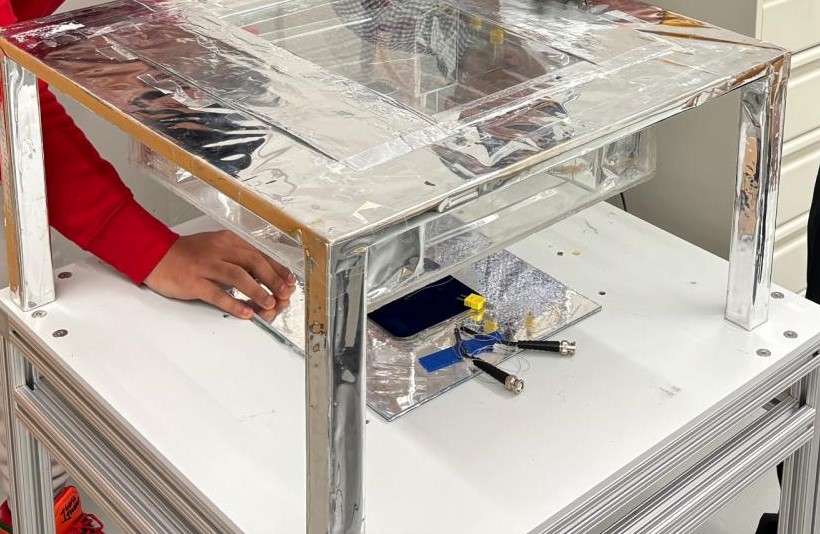Researchers at Penn State University in the United States have fabricated a prototype of a hybrid energy system integrating solar cells for power production and radiative cooling for external cooling purposes.
Radiative cooling occurs when the surface of an object absorbs less radiation from the atmosphere and emits more. As a result, the surface loses heat and a cooling effect can be achieved without the need for power.
“The photovoltaic electricity generated in the dual system can be used for energy storage or be converted to alternating current by using an inverter,” the scientists said. “The coldness achieved on the transparent radiative cooler can be used to cool air or liquid, which can be driven by fan or pump, respectively, to interface with thermal systems for energy savings.”
The proposed system achieves simultaneous subambient daytime radiative cooling and photovoltaic electricity generation from the same area. “At night and during the day, the radiative cooler works as a 24/7 natural air conditioner,” said the research's lead author Pramit Ghosh. “Even on a hot day, the radiative cooler is cold to the touch.”
The system consists of a transparent low-iron glass radiative cooler that is able to transmit 91% of sunlight, a visibly transparent infrared-opaque layer, and a 125 mm × 125 mm interdigitated back-contact (IBC) photovoltaic cell provided by US-based manufacturer Maxeon. The radiative cooler has no direct radiative heat exchange with the PV device.
The scientists tested the system in an outdoor environment at Penn State Sustainability Institute’s Sustainability Experience Center and found it could surpass the electricity saving of a bare solar cell by as much as 30%. “We demonstrated simultaneous subambient daytime radiative cooling at 5.1 C temperature reduction under solar irradiance of about 1,000 W/m2 and solar power generation up to 159.9 W/m2 from the same area,” they explained. “We experimentally achieved ambient cooling power of 63.8 W/m2 under peak sunlight and ambient cooling power of 87.0 W/m2 at night.”
The research group also assumed the power generated by the solar cell to be utilized to power a cooling system with a coefficient of performance (COP) 2.8, and found the cooling power of the hybrid system would be five times more than the daytime cooling power achieved in conventional solar-reflective radiative coolers.
“Our work highlights the significant opportunity of simultaneously harvesting both the sun and the cold universe for renewable energy at a level that can exceed the performance of using either resource alone,” it concluded.
The system was described in the study “Simultaneous subambient daytime radiative cooling and photovoltaic power generation from the same area,” which was recently published in Cell Reports Physical Science.
Radiative cooling was recently applied to solar panel cooling by researchers from Saudi Arabia's King Abdullah University of Science and Technology (KAUST), Shanghai Jiao Tong University in China, Purdue University in the United States, the Catalan Institute of Nanoscience and Nanotechnology and the Instituto de Ciencia de Materiales in Spain, and the Jordan University of Science and Technology and the Australian College of Kuwait, among others.
This content is protected by copyright and may not be reused. If you want to cooperate with us and would like to reuse some of our content, please contact: editors@pv-magazine.com.




By submitting this form you agree to pv magazine using your data for the purposes of publishing your comment.
Your personal data will only be disclosed or otherwise transmitted to third parties for the purposes of spam filtering or if this is necessary for technical maintenance of the website. Any other transfer to third parties will not take place unless this is justified on the basis of applicable data protection regulations or if pv magazine is legally obliged to do so.
You may revoke this consent at any time with effect for the future, in which case your personal data will be deleted immediately. Otherwise, your data will be deleted if pv magazine has processed your request or the purpose of data storage is fulfilled.
Further information on data privacy can be found in our Data Protection Policy.